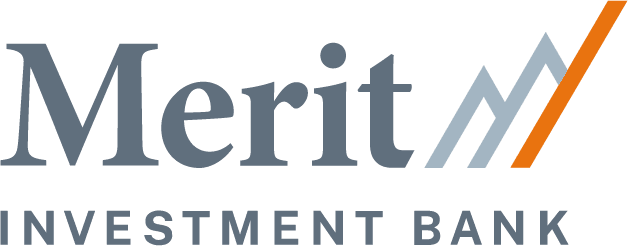10 Ways to Make Your Business More Valuable
If you are considering selling your company in the future, you are likely wondering how much your company may be worth and what makes a business attractive to potential buyers. To help you understand those dynamics, my colleagues and I at Merit Investment Bank & Company have assembled a checklist to help you self-assess your situation and plan for the future.
First, it’s important to conduct a comprehensive self-assessment to identify gaps and opportunities that can increase your company’s value. Potential buyers are looking for well-prepared businesses that have good prospects for growth. So, the more you know about your company’s strengths and weaknesses, the better off you will be during any deal process. It’s also important to constantly prepare for an exit because you never know when the right selling opportunity may come your way.
Keep in mind that institutional buyers, or investors, are actively looking for solid businesses to acquire or invest in. They are not looking for “a job” or “a fixer-upper.” Investors are looking to purchase a company at a fair price in hopes they can grow it and sell it for an even greater price in the future.
1. Financial Performance
To be a desirable acquisition that will achieve a premium price, you should have three solid years of demonstrated financial performance with top-line revenue growth exceeding 10% per annum and adjusted EBITDA (Cash Flow) margins exceeding 15%.
Companies with these metrics are attractive because they represent significant upside growth opportunities funded from internal resources. They also are more likely to have the ability to weather economic bumps or downturns.
Businesses with less than $25 million in revenue often lack these internal resources for growth and may require a buyer to invest additional capital to support the original investment if faced with a downturn. And, as you might imagine, further investment is a situation that a buyer strives to avoid.
2. Proven and Developed Management Team
Your company should include a management team. You don’t need an oversized team with lots of overhead, but you do need a tenured group that can run the business, ideally without the continued involvement of the founder.
For example, you should have a Controller/CFO, Sales Leader, Human Resources professional, and a Chief Operating Officer. As the company grows, more functional heads and regional leaders can be added. All of these positions working together present a transferable management team able to lead the company to new levels of financial performance.
In building a management team, it is ideal that they have been in place for a while and they have proven their worth. Just hiring a new CFO or VP Sales that may or may not work out doesn’t have the same credibility as a proven, tenured team that has managed planning and economic cycles and business surprises and challenges.
Believe it or not, banks and institutional investors really back the management team when evaluating a business because they realize the team will help them accomplish their future growth goals. Relying on any one person is risky and unhealthy.
And, speaking of health, the business owner’s quality of life improves dramatically with a great team in place. If you can take four vacations a year and not spend any time on emails and phone calls, then you probably have built a great management team. If you are tied to your phone and emails, you probably still have some work to do.
3. Audited Financials
We strongly believe that you should invest in an annual audit or review of the financial statements by a respected independent accounting firm. Don’t use a one-man accounting firm owned by a relative, such as the one used by Bernie Madoff. Independent oversight of your financials demonstrates to the world that you are serious about the integrity and presentation of your company’s financial reporting.
Also, if you have audited financials, then you have a CPA. It’s essential to keep your CPA in mind as they can be a valuable partner in helping capital providers understand your business when they are evaluating it. Like it or not, even when you and your CPA provide the same answer, buyers will generally place more weight on your CPA’s response than yours. That’s just life.
Along with your audited financials, you may want to consider having a pre-sale Quality of Earnings (QoE) study conducted that helps buyers better understand the stability of the business cash flow and working capital requirements. By the way, all Buyers will complete a QoE, so it’s good to have one done before going to market, thereby being prepared for a Buyers QoE findings. We believe that it is better to identify issues on your time than during a Buyer’s due diligence. These are items that could lead to a decrease in company valuation or even a deal collapsing altogether.
4. Timely/Accurate Financial and Operational Reporting
A solid financial and operational reporting process helps to measure, report, and manage the business in line with audited financials. Some examples of what Buyers will want to see on a monthly basis are financial statements, sales reports by product and customer, production and inventory reports, and accounts receivable/payable aging reports, margin by product, margin by customer, purchases by vendor, and a myriad of other key metrics. Potential buyers want to see a well-run company with all players marching toward the same goal.
Also noteworthy is that all of your reports tie out in a coherent manner. We often see Finance, Sales, and Operations report the same metrics differently when they should all agree. In some instances, measures are different based upon who requested the report and which IT person crafted it. Be sure to check that your internal reporting is consistently aligned. If discrepancies exist, take the time to understand why differences exist and explain justifiable differences while simultaneously correcting any erroneous reporting. It’s also a good exercise for the management team to agree upon definitions and how to view the business in a valuable way to everyone.
So, before you launch your company into the market, be sure that all of your documents accurately report (and tie out) the information you present.
5. Diversified Revenue Streams
Business concentration is one of the riskiest parts of middle-market companies. Many companies begin with a single product or customer. However, over time, the business must grow beyond those initial revenue sources and withstand the inevitable customer and product issues. Having a product/customer revenue concentration in one area is risky for all sorts of obvious reasons. Remember, buyers are looking for a foundation for growth. Demonstrating a diversified revenue base establishes that the foundation is attractive to buyers as it reduces the business’s risk profile.
It is important to note that we’ve encountered instances where buyers will not look at companies where any one customer is more than 5% sales. Likewise, being dependent upon one or a small group of products is risky in the event of raw material disruptions or market shifts.
Summary
We are halfway through our list and hope that the first five items have been insightful, stimulated some reflection, and review. While it is not always an easy process, taking a critical look at your business can be rewarding and exciting. Stay tuned for Part 2, where we complete the 10 Ways list. In the meantime, please visit our quick and easy online business evaluation tool so that you and your team can take a deeper look into your business and begin thinking about how to improve its value.
https://www.mycorevalue.com/engage/landing/jd-merit-web
About John Illes
John Illes has both investment banking expertise and senior executive management experience. His unique background provides a pragmatic perspective on the M&A world. John knows what it takes to build an organization, and he prides himself on partnering with clients to secure successful outcomes.
John is Managing Director with Merit Investment Bank, a boutique investment banking firm whose professionals have completed hundreds of middle-market M&A deals, with an aggregate value of $10 billion. Merit Investment Bank & Company is the US affiliate of CDI Global, an international investment bank with offices in over 40 countries, where John co-leads the worldwide Industrials sector practice along with colleagues in Canada, Germany, and Spain.
John L. Illes, CM&AA, MBA
Managing Director, Merit Investment Bank
Greenville, South Carolina
864.610.2946
John.Illes@meritinvestmentbank.com
Legal Info
Copyright © 2021,



0 Comments